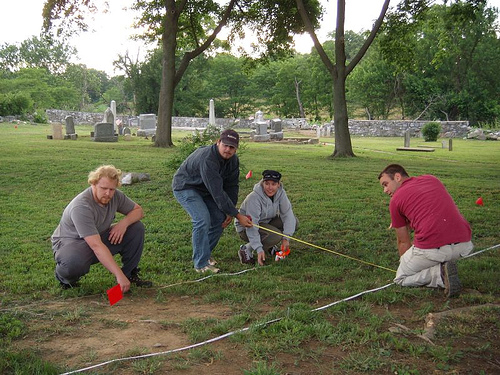Archaeology of Grave Sites
The archaeology of grave sites usually becomes necessary in conjunction with new construction in an urban environment. Excavations accidentally unearth human remains that had not been expected. This has been the case in many cities on the east coast, despite new directives for land planners to understand the past history of a site before digging through the Section 106 process. African American burial grounds in former Potter's Fields or buried churchyards have been uncovered in both New York City and Philadelphia.
In an existing cemetery or burial ground, if no previous mapping of an area or documentation on burials can be found, archaeologists could assist in determining whether cemetery land without monuments had been used for earlier burials. Many different discovery techniques are available to the professional archaeologist for such pursuits. While this can cost money, if the property is to become reactivated as a revenue-producing cemetery, new lot sales could easily pay for the service. In the process of considering how to preserve an historic cemetery, consideration should always be given to the possibility of reactivating the site if sufficient unused land remains.
The business practice of running a cemetery should be reviewed carefully before undertaking such an effort. To find out further information on cemetery management, licensing, and procedures, contact:
- International Cemetery and Funeral Association
- Pennsylvania Real Estate Commission
- Requirements from Internal Revenue Service
 |
| Setting a grid for archaeological investigation |